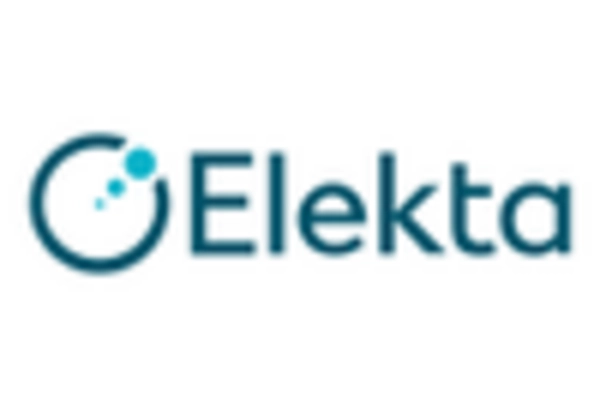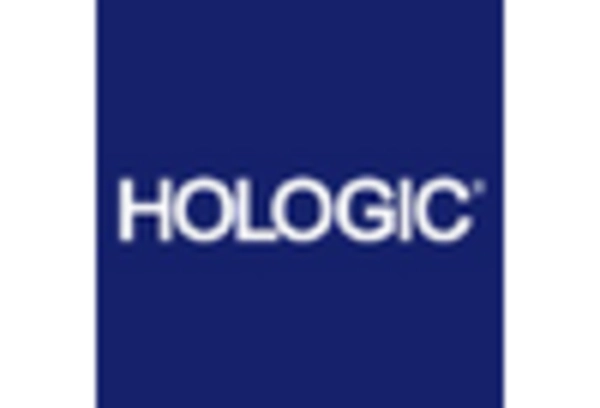Growing Geriatric Population
The expanding geriatric population is a significant factor influencing the HIDA Scan Market. Older adults are more susceptible to various health conditions, including liver dysfunction and biliary diseases, which necessitate accurate diagnostic imaging. As the global population ages, the demand for medical imaging services, particularly HIDA scans, is expected to rise. Statistics indicate that the proportion of individuals aged 65 and older is steadily increasing, leading to a higher prevalence of age-related health issues. This demographic shift presents a substantial opportunity for the HIDA Scan Market, as healthcare providers seek effective diagnostic tools to manage the health of elderly patients. Consequently, the market is likely to expand in response to the growing need for specialized imaging services tailored to this population.
Rising Healthcare Expenditure
An increase in healthcare expenditure across various regions is driving the HIDA Scan Market. As governments and private sectors allocate more resources to healthcare, there is a corresponding rise in the availability and accessibility of advanced diagnostic services. This trend is particularly evident in developing economies, where investments in healthcare infrastructure are on the rise. Enhanced funding allows for the procurement of advanced imaging technologies, including HIDA scan equipment, which improves diagnostic capabilities. Furthermore, as patients become more aware of their health and seek timely medical interventions, the demand for HIDA scans is likely to grow. The HIDA Scan Market stands to benefit from this upward trend in healthcare spending, as it facilitates the adoption of innovative diagnostic solutions.
Advancements in Nuclear Medicine
Innovations in nuclear medicine technology are transforming the HIDA Scan Market. The development of more sophisticated radiopharmaceuticals and imaging equipment enhances the accuracy and efficiency of HIDA scans. These advancements allow for better visualization of liver function and biliary tract disorders, which is essential for accurate diagnosis. The market has witnessed a shift towards hybrid imaging techniques, combining HIDA scans with other modalities such as CT and MRI, which improves diagnostic capabilities. As healthcare facilities invest in state-of-the-art imaging technologies, the HIDA Scan Market is likely to experience substantial growth. The integration of these advanced technologies not only improves patient outcomes but also increases the overall demand for HIDA scans in clinical settings.
Increasing Prevalence of Liver Diseases
The rising incidence of liver diseases, including hepatitis and cirrhosis, is a crucial driver for the HIDA Scan Market. As liver-related ailments become more common, the demand for diagnostic imaging techniques, such as HIDA scans, is likely to increase. According to recent health statistics, liver diseases account for a significant percentage of global morbidity and mortality. This trend necessitates advanced imaging solutions to facilitate early diagnosis and effective treatment planning. The HIDA Scan Market is poised to benefit from this growing need, as healthcare providers seek reliable methods to assess liver function and detect abnormalities. Furthermore, the increasing awareness of liver health among the population may lead to more individuals seeking diagnostic services, thereby propelling market growth.
Increased Focus on Preventive Healthcare
The growing emphasis on preventive healthcare is a notable driver for the HIDA Scan Market. As healthcare systems shift towards proactive management of health, the demand for early diagnostic tools, such as HIDA scans, is likely to increase. Preventive healthcare strategies aim to identify potential health issues before they escalate, and HIDA scans play a crucial role in this approach, particularly for liver and biliary tract assessments. The rising awareness among patients regarding the importance of regular health check-ups further fuels this trend. Consequently, healthcare providers are increasingly incorporating HIDA scans into routine diagnostic protocols, thereby enhancing the market's growth potential. This focus on prevention aligns with broader public health initiatives aimed at reducing the burden of chronic diseases.


















Leave a Comment